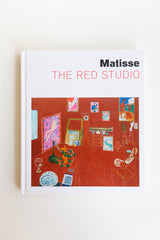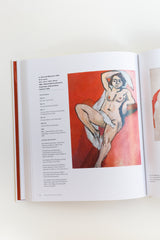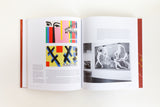Matisse: Red Studio
The adventures, mysteries and many lives of a Matisse masterpiece
Created in 1911, Henri Matisse’s The Red Studio would go on to become one of the most influential works in the history of modern art. The painting, which has hung in MoMA’s galleries since 1949, depicts the artist’s studio in the Parisian suburb of Issy-les-Moulineaux, filled with his own artworks, furniture and decorative objects. Matisse’s radical decision to saturate the work’s surface with red has fascinated generations of scholars and artists, yet much remained to be discovered about the painting’s genesis and history.
Published in conjunction with an exhibition that reunites the artworks shown in The Red Studio for the first time since they left Matisse’s work space, this copiously illustrated catalog examines the paintings and sculptures depicted in it, from familiar works such as Young Sailor II (1906) to lesser-known pieces whose locations have only recently been discovered. A narrative essay by Ann Temkin, the Marie-Josée and Henry Kravis Chief Curator of Painting and Sculpture at the Museum of Modern Art, New York, and Dorthe Aagesen, Chief Curator and Senior Researcher at Statens Museum for Kunst, Copenhagen, traces the life of The Red Studio, from the initial commissioning of the work in 1911 through its early history of exhibition and ownership to its arrival at MoMA after World War II. The book features a rich selection of archival materials, including photographs, letters and ephemera, many of which have never before been published or exhibited. With its groundbreaking research and close reading of the work, Matisse: The Red Studio transforms our understanding of this landmark of 20th-century art.














